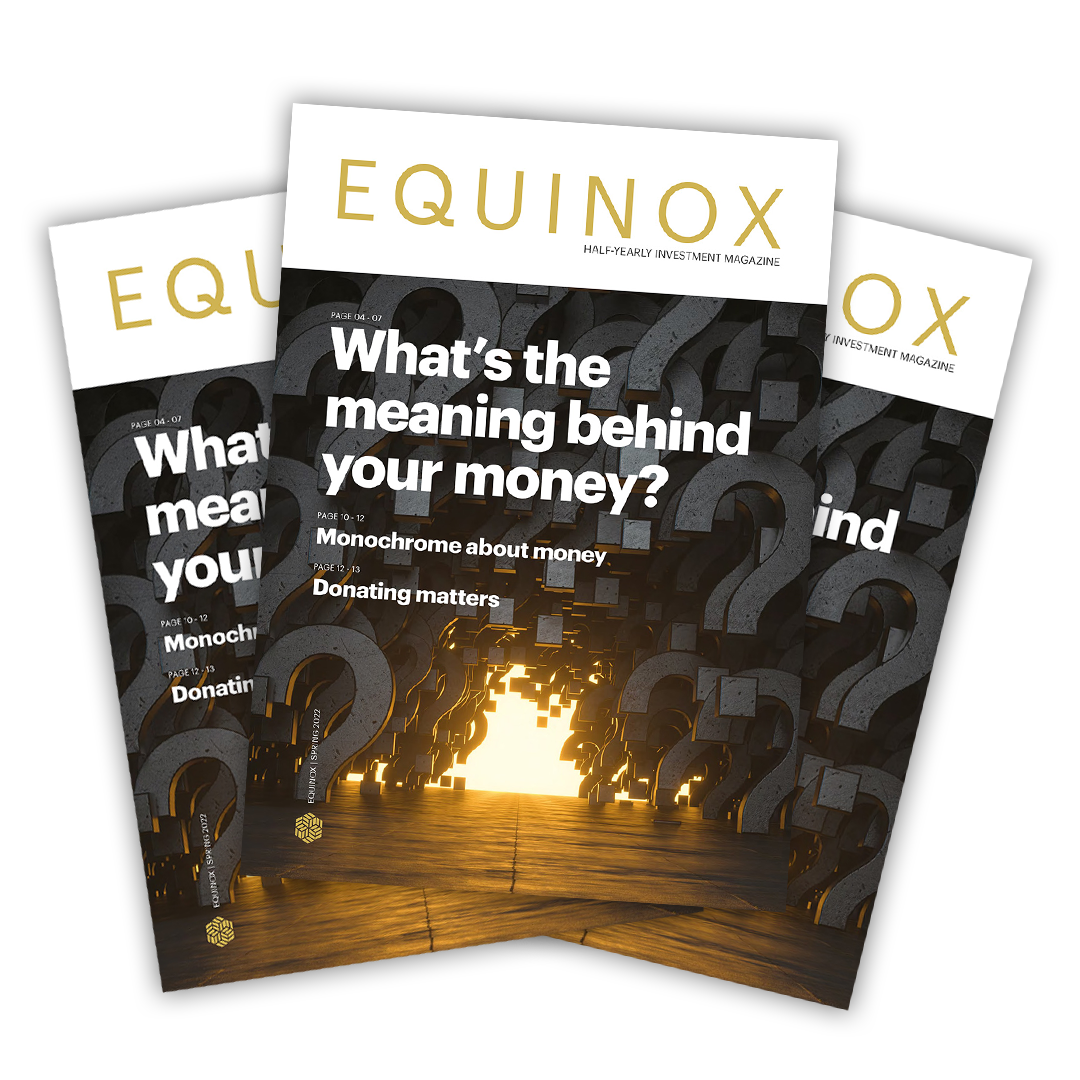Good behaviour
When we are reviewing a fund that we might want to hold in our portfolios, our main focus is understanding how it is likely to behave in different environments.
For example, we would expect a more aggressive growth fund to outperform if markets are going up. However, should markets fall, we should not be surprised to find it fall by more than the market.
On the flip side, some funds tend to be more resilient when equities are volatile but lag in a strongly rising market.
We can also get into more detailed scenario analysis too. For example, when reviewing a bond fund, we might ask if it is likely to outperform if interest rates are going up or down?
For us, what’s important is understanding what is likely to happen in different scenarios. If a fund does something unexpected, then that is a big red flag. A conservative fund that underperforms because markets are going up isn’t a worry. It isn’t the fund manager’s fault – that’s what the fund is designed to do. It’s our fault for buying it!
For our own core portfolios (the cautious, balanced and adventurous funds), we also want their behaviour to be relatively predictable. However, things can be slightly more complicated for a mixed asset fund which invests in lots of different asset classes.
Clients often compare our performance to an equity index like the FTSE 100. However, taking the balanced portfolio as an example, we only hold about half the portfolio in equities (and related assets) with the other half in other assets like bonds or property (which might be doing something completely different).
Within our equities, less than half are currently in the UK with the rest overseas. Even our UK funds tend to be more exposed to the small or mid cap indices rather than the top 100. As a result, the FTSE 100 tells you very little about what our portfolio might be doing.
That’s why we always encourage clients to compare our performance to mixed investment funds. For example, Financial Express (FE) classify each of our three core funds in the “Mixed Investment 20%-60% Shares” sector, where funds have stock market exposure within this range.
As a rule, our cautious fund tends to sit towards the lower end of this risk range, balanced somewhere in the middle, and adventurous at the top end. If you compare our returns to this sector, we’d typically expect cautious to outperform in a falling market, adventurous to outperform in a rising one, and balanced to be relatively consistent in the middle.
Table one shows our discrete annual returns over each of the four full calendar years since the funds were launched. As well as the returns, the table shows in which quartile our fund was over that period. First quartile means it is in the top 25% of funds in this sector, the second quartile is the next 25% of funds and so on. It is colour-coded with blue meaning first quartile, green second, and yellow third.

Warning: Undefined array key "caption" in /srv/users/equilibrium-dev/apps/equilibrium-dev/public/wp-content/themes/equilibrium/partials/image-block.php on line 4
This shows our funds are behaving exactly as expected. In 2018, when the average fund in the sector fell by over 5%, the cautious fund was in the first quartile because it fell significantly less. Adventurous was in the third quartile as it fell slightly more as we would expect it to.
Meanwhile in 2021, when the sector gained 7.65%, cautious was in the third quartile as it only gained 6.51%, but adventurous was in the first quartile as it returned 9.58% (+1.93% above the sector).
The first half of 2020 was very difficult due to the pandemic, with many assets becoming much more correlated and all falling at the same time, before recovering. However, if we look at each calendar year, our funds’ behaviour has been exactly what we would have expected. Cautious and adventurous have each outperformed the sector in three of the four years and balanced has outperformed every year consistently.
Our official objectives are actually very simple, which is to provide returns above inflation. In some ways, we pay little attention to industry benchmarks as our focus is simply on trying to achieve the “real return” targets within the risk parameters of the fund. However, the mixed sectors do demonstrate how we’re doing against the peer group.
In a spin
The FTSE 100 Index has risen sharply in the first couple of weeks of this year, although many overseas markets have dropped along with other assets, like bonds.
However, the FTSE is doing a bit of catching up, having underperformed other markets in the past few years. One of the reasons why this trend has changed in the short-term is due to optimism about the economy.
Omicron now looks unlikely to have as serious an economic impact as first feared. Investors are therefore becoming more optimistic about cyclical industries like energy, mining and finance which make up a big proportion of the top 100 companies.
At the same time, this means the outlook for some of the “working from home” industries such as technology stocks (of which there are very little in the FTSE), has worsened.
Economic optimism also makes it more likely that central banks will put up interest rates and dial back quantitative easing. This looks particularly likely as inflation is currently well above where they would like it to be.
Rising interest rates are generally bad for bonds, and some stocks like technology are also sensitive to changes in rate expectations.
What we are currently seeing is therefore something of a “rotation” within markets, where previous leaders become laggards and vice versa.
We have seen several rotations and reversals over the past year or so, as new Covid variants and treatments have “whipsawed” economic sentiment. This can be a tough environment to be an investor as trends can change incredibly quickly.
Our approach, as always, is to try and have a foot in both camps, with no strong preference towards “re-opening” or “working from home” trends.
A kicker to returns
The resurgence of the FTSE 100 will hopefully help performance in a slightly indirect way. This is because we hold a number of defined returns products which are linked to the FTSE 100 Index.
Whilst the price of these products does move as a result of the index returns, there is also something of a “delay” built in. The full value of these products only becomes apparent if we pass one of the potential kick-out dates and market levels.
Between now and the end of March, we have four defined returns which might mature (depending where the market is on a particular day), totalling around 6% of the cautious and balanced funds.
For example, on 31st January, our Credit Suisse product will kick-out should the FTSE 100 be above 7,588 and the S&P 500 above 2,822.
As I write this (14 January), these markets are at 7,550 and 4,640 respectively. The S&P is well above the level we require whereas we still need another 38 points of gain from the FTSE 100.
This product was set up in 2018 and promised to pay a potential 10.83% pa. Because the markets (the FTSE in particular) were below the starting level on the first three anniversary dates, the product has rolled onto its fourth year.
This means, if it kicks out this year the return from launch will be 10.83% x 4 = 43.32%, even though the FTSE looks like being flat at best.
Of course, we could have bought equities directly instead and we would then have received dividends too. Interestingly, if we’d put half of the money into the FTSE 100 and half in the S&P 500 instead, our return would be a very similar 47.39% (Source: FE Analytics/Equilibrium Investment Management). The return of the product would be almost the same as the return on the market, but with some downside protection thrown in “for free”!
Markets don’t always go up. These products have a nice feature in that if markets drop over six years, then we still get our initial money back unless the market is more than 40% down (something that hasn’t happened in past six-year periods).
In the case of the Credit Suisse product, if it doesn’t kick-out this year we might get the returns next year instead when we’d receive 54.15%, or even in year six when we could receive 64.98% (10.83% x 6) if markets are above the starting levels.
We like to invest into a variety of different asset classes. Even then, we might not always access those asset classes in a direct fashion. Defined returns is one way which we can benefit from rising equity markets but protect ourselves to some extent should they fall.
If we do get kickouts, we are likely to reinvest some of the money back into defined returns. We will also look at topping up our “real assets” like property, as we think these protect against inflation rising even further. We may also buy some traditional equity but use some other ways of hedging this risk.


